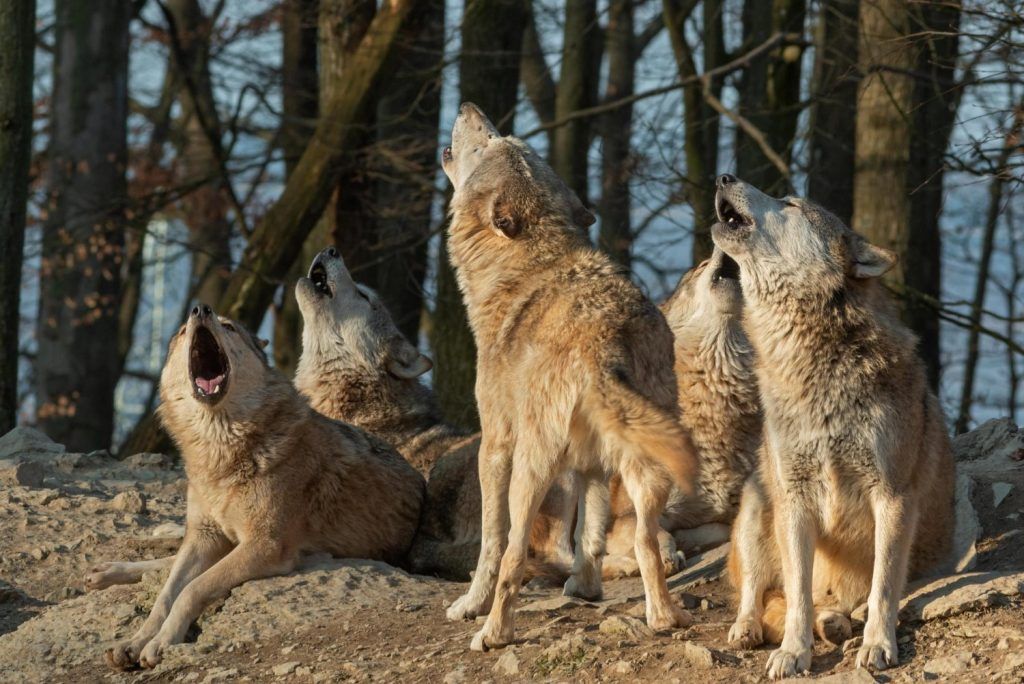Overview
Introduction to Spanish wolf territories
The Spanish wolf territories are vast and diverse, covering a wide range of landscapes and habitats. These territories are home to a thriving population of wolves, which have adapted to the unique challenges of their environment. From the rugged mountains of the Pyrenees to the dense forests of Galicia, the wolves of Spain have established their presence in various regions. Mapping their roaming ranges is essential to understanding their movement patterns and conservation needs. This article explores the fascinating world of Spanish wolf territories and the importance of preserving their natural habitats.
Importance of mapping their roaming ranges
Mapping the roaming ranges of Spanish wolves is of great importance for several reasons. Firstly, it provides valuable insights into their habitat preferences and spatial distribution. By understanding the areas they frequent, we can better identify and protect critical wolf territories. Additionally, mapping their roaming ranges allows us to assess the impact of human activities on wolf populations. This information is crucial for implementing effective conservation strategies and mitigating conflicts between wolves and human communities. Furthermore, studying the roaming patterns of Spanish wolves helps us understand their ecological role and interactions with other species in the ecosystem. Overall, mapping their roaming ranges is essential for the conservation and management of Spanish wolf populations.
Methods used for mapping
To map the wide roaming ranges of Spanish wolves, various methods were employed. Firstly, satellite tracking technology was utilized to monitor the movements of individual wolves over an extended period of time. This allowed researchers to gather data on the distances covered by the wolves and the areas they frequented. Additionally, camera traps were strategically placed throughout the wolf territories to capture images of the animals and identify their presence in specific locations. This data was then used to create maps illustrating the spatial distribution of the wolves’ roaming ranges. The combination of satellite tracking and camera trap data provided a comprehensive understanding of the territories occupied by Spanish wolves and their extensive roaming behavior.
Historical Distribution of Spanish Wolves
Origins and evolution of Spanish wolf populations
The origins and evolution of Spanish wolf populations can be traced back to ancient times. Wolves have inhabited the Iberian Peninsula for thousands of years, adapting to the diverse landscapes and climates of the region. Over the centuries, these magnificent creatures have played a crucial role in the ecosystem, regulating prey populations and maintaining a healthy balance in nature. Despite facing numerous challenges, including habitat loss and persecution, Spanish wolf populations have managed to survive and even thrive in certain areas. Today, efforts are being made to protect and conserve these iconic animals, ensuring their continued presence in the wild for future generations to admire and appreciate.
Changes in distribution over time
The distribution of Spanish wolf territories has undergone significant changes over time. Historically, wolves were found throughout the entire Iberian Peninsula, but due to human activities such as habitat destruction and hunting, their range has greatly diminished. In recent years, however, there have been efforts to protect and restore wolf populations, leading to an expansion of their territories. These changes in distribution highlight the dynamic nature of wolf populations and the importance of conservation efforts in ensuring their survival.
Factors influencing historical distribution
The historical distribution of Spanish wolf territories has been influenced by various factors. One significant factor is the availability of suitable habitat. Wolves require large areas of forested land with ample prey populations to establish their territories. The presence of human settlements and agricultural activities has also played a role in shaping the distribution of wolf territories. Human encroachment into natural habitats has led to habitat fragmentation and loss, which has restricted the range of wolves. Additionally, historical persecution of wolves by humans, driven by fear and competition for resources, has further impacted their distribution. Understanding these factors is crucial for effective conservation and management of Spanish wolf populations.
Current Range of Spanish Wolves
Geographical distribution of wolf territories in Spain
The geographical distribution of wolf territories in Spain is a topic of great interest and importance. Wolves are known to have wide roaming ranges, and their territories can cover vast areas of the country. These territories are not fixed and can vary in size depending on factors such as prey availability and competition with other wolf packs. Mapping the wolf territories is crucial for conservation efforts and understanding the ecological dynamics of these apex predators. By studying their geographical distribution, researchers can gain insights into the connectivity between different wolf populations and identify key areas for conservation actions. It is fascinating to explore the vast and diverse landscapes that serve as home to these magnificent creatures.
Variations in range size and shape
Variations in range size and shape are common among Spanish wolf populations. These variations can be influenced by various factors such as habitat availability, prey abundance, and competition with other predators. In some areas, wolves have larger ranges that cover vast territories, while in other regions, their ranges may be smaller and more compact. The size and shape of wolf territories can also change over time as a result of environmental changes or shifts in wolf populations. Understanding these variations in range size and shape is crucial for effective conservation and management of Spanish wolf populations.
Factors affecting current range
The current range of Spanish wolves is influenced by several factors. One of the main factors is habitat availability, as wolves require large areas of undisturbed forest to establish their territories. Another factor is prey availability, as wolves primarily feed on ungulates such as deer and wild boar. The abundance of prey species in an area can determine the suitability of that area for wolf habitation. Human activities, such as habitat destruction and hunting, also play a role in shaping the current range of Spanish wolves. These activities can fragment wolf habitats and reduce prey populations, forcing wolves to seek new territories. Additionally, the presence of human settlements and livestock can lead to conflicts between wolves and humans, further influencing the distribution of wolf territories.
Mapping Techniques
GPS tracking and telemetry
GPS tracking and telemetry have revolutionized the study of Spanish wolf territories. By attaching GPS collars to individual wolves, researchers are able to track their movements and monitor their behavior in real-time. This technology provides valuable insights into the wide roaming ranges of Spanish wolves, allowing scientists to understand their habitat preferences, hunting patterns, and social interactions. The data collected through GPS tracking and telemetry is crucial for conservation efforts and the development of effective management strategies for this iconic species.
Remote sensing and satellite imagery
Remote sensing and satellite imagery have revolutionized the way we study and understand the world around us. In the context of Spanish wolf territories, these technologies have played a crucial role in mapping their wide roaming ranges. By capturing high-resolution images from space and analyzing them using advanced algorithms, researchers have been able to identify and monitor the movement patterns of these elusive creatures. This information has not only provided valuable insights into the spatial distribution of wolf populations, but also helped in identifying key habitat areas and potential conflicts with human activities. With the continuous advancements in remote sensing and satellite imagery, our understanding of Spanish wolf territories is constantly evolving, enabling us to develop better conservation strategies and ensure the long-term survival of these magnificent predators.
Collaborative citizen science projects
Collaborative citizen science projects have played a crucial role in the study of Spanish wolf territories. These projects have allowed researchers to gather valuable data on the wide roaming ranges of Spanish wolves, which has significantly contributed to our understanding of their behavior and habitat requirements. By engaging citizen scientists in data collection and analysis, these projects have not only increased the amount of data available but have also fostered a sense of ownership and stewardship among local communities. This collaborative approach has proven to be an effective way to bridge the gap between scientific research and public involvement, ultimately leading to more informed conservation efforts for Spanish wolf populations.
Challenges and Limitations
Difficulties in accurately mapping wolf territories
Mapping wolf territories can be a challenging task due to several difficulties. One of the main challenges is the wide roaming ranges of Spanish wolves. These wolves have vast territories that can span across various landscapes, including mountains, forests, and open plains. Another difficulty lies in the elusive nature of wolves, making it hard to track their movements accurately. Additionally, the dense vegetation and rugged terrain in some areas further hinder the mapping process. Despite these challenges, researchers and conservationists are employing advanced technologies and innovative techniques to gain a better understanding of Spanish wolf territories and their roaming patterns.
Impacts of human activities on mapping efforts
Human activities have had significant impacts on the mapping efforts of Spanish wolf territories. These activities, such as deforestation, urbanization, and the construction of roads and infrastructure, have led to habitat fragmentation and loss. As a result, it has become more challenging to accurately map the wide roaming ranges of Spanish wolves. Additionally, human activities have also disrupted the natural migration patterns of these animals, further complicating the mapping process. To mitigate these impacts, conservation efforts and the implementation of protective measures are crucial to ensure the preservation and accurate mapping of Spanish wolf territories.
Data gaps and uncertainties
Data gaps and uncertainties are common when studying the roaming ranges of Spanish wolves. Due to the vast and remote nature of their territories, it is challenging to gather comprehensive data on their movements and habitat preferences. Additionally, the elusive nature of wolves makes it difficult to track their exact locations and accurately estimate the size of their roaming ranges. These data gaps and uncertainties hinder our understanding of the spatial dynamics and population dynamics of Spanish wolves, making it crucial to invest in further research and monitoring efforts to fill these knowledge gaps.
Conclusion
Importance of ongoing research and monitoring
Ongoing research and monitoring of Spanish wolf territories is of utmost importance. By studying the wide roaming ranges of these wolves, scientists can gain valuable insights into their behavior, population dynamics, and habitat requirements. This information is crucial for effective conservation efforts and the development of management strategies that ensure the long-term survival of this iconic species. Additionally, ongoing research allows for the identification of potential threats and challenges facing Spanish wolf populations, enabling timely interventions to mitigate these risks. Therefore, continuous monitoring and research efforts are essential for maintaining the ecological balance and biodiversity of the Spanish wolf territories.
Conservation implications
The mapping of Spanish wolf territories and their wide roaming ranges has significant conservation implications. By understanding the extent of their territories, conservationists can better identify and protect critical habitats for these apex predators. Additionally, this information can inform management strategies to mitigate human-wolf conflicts and promote coexistence. With accurate mapping data, conservation efforts can be targeted towards areas where wolves are most likely to roam, ensuring the long-term survival of this iconic species in Spain.
Future directions for mapping Spanish wolf territories
In order to further advance the mapping of Spanish wolf territories, several future directions can be explored. Firstly, incorporating data from satellite tracking devices can provide more accurate and real-time information on the movements and ranges of the wolves. This can help identify key areas for conservation efforts and better understand their habitat preferences. Additionally, utilizing advanced remote sensing techniques, such as aerial imagery and LiDAR, can enhance the precision and detail of the mapping process. These technologies can provide valuable insights into the landscape characteristics and vegetation types that influence the distribution of wolf territories. Furthermore, collaboration between researchers, wildlife conservation organizations, and local communities is crucial for the success of mapping initiatives. By working together, sharing data and expertise, we can ensure comprehensive and up-to-date mapping of Spanish wolf territories, ultimately contributing to their conservation and management.


